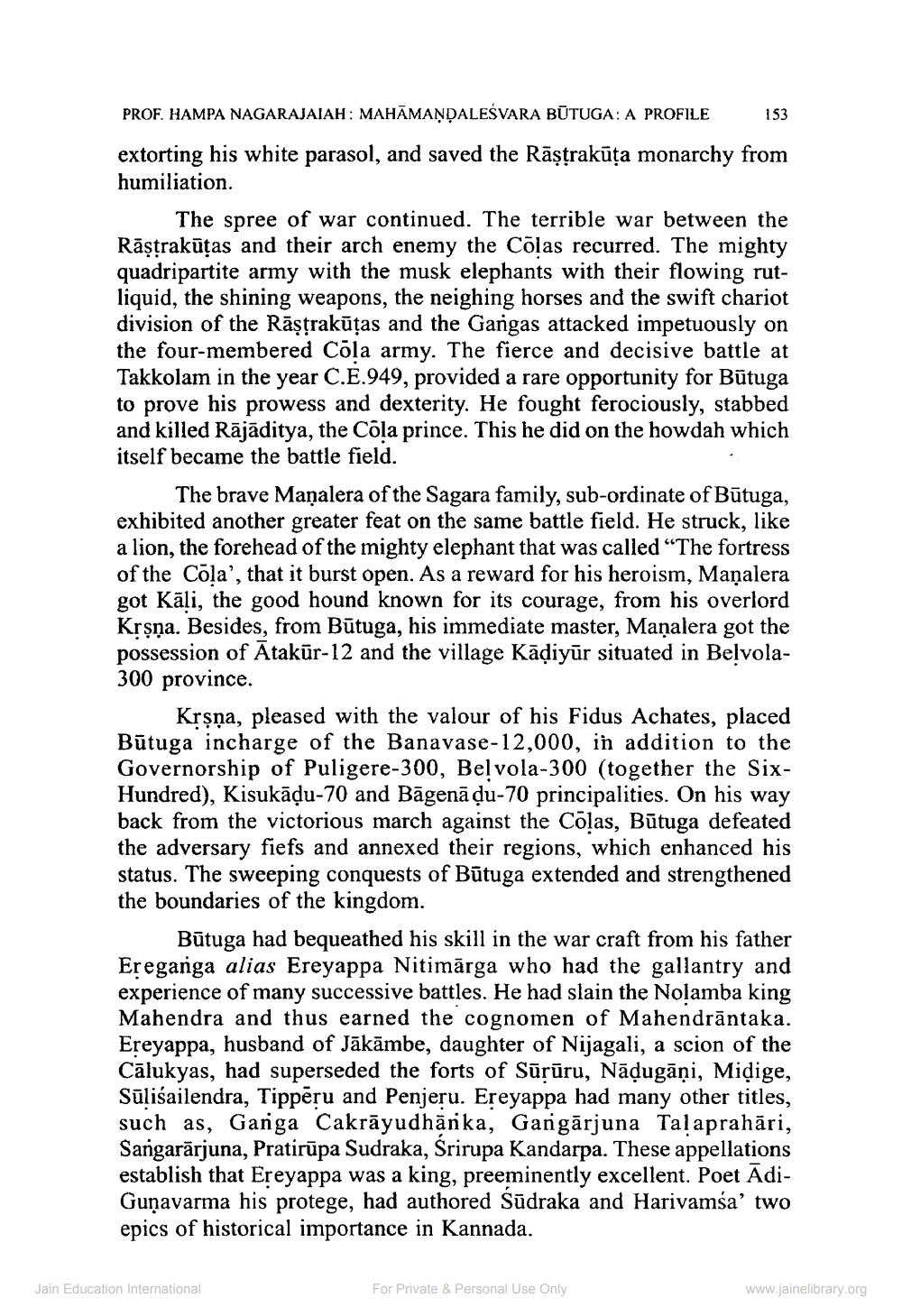________________
PROF. HAMPA NAGARAJAIAH: MAHĀMANDALESVARA BŪTUGA: A PROFILE
153
extorting his white parasol, and saved the Rāştrakūta monarchy from humiliation.
The spree of war continued. The terrible war between the Rāstrakūtas and their arch enemy the Colas recurred. The mighty quadripartite army with the musk elephants with their flowing rutliquid, the shining weapons, the neighing horses and the swift chariot division of the Rāştrakūțas and the Gargas attacked impetuously on the four-membered Cola army. The fierce and decisive battle at Takkolam in the year C.E.949, provided a rare opportunity for Būtuga to prove his prowess and dexterity. He fought ferociously, stabbed and killed Rājāditya, the Cola prince. This he did on the howdah which itself became the battle field.
The brave Mañalera of the Sagara family, sub-ordinate of Būtuga, exhibited another greater feat on the same battle field. He struck, like a lion, the forehead of the mighty elephant that was called “The fortress of the Cola', that it burst open. As a reward for his heroism, Maņalera got Kāli, the good hound known for its courage, from his overlord Krşņa. Besides, from Būtuga, his immediate master, Mañalera got the possession of Atakūr-12 and the village Kādiyūr situated in Belvola300 province.
Krsna, pleased with the valour of his Fidus Achates, placed Būtuga incharge of the Banavase-12,000, in addition to the Governorship of Puligere-300, Bel vola-300 (together the SixHundred), Kisukādu-70 and Bāgenādu-70 principalities. On his way back from the victorious march against the Coļas, Būtuga defeated the adversary fiefs and annexed their regions, which enhanced his status. The sweeping conquests of Būtuga extended and strengthened the boundaries of the kingdom.
Būtuga had bequeathed his skill in the war craft from his father Ereganga alias Ereyappa Nitimārga who had the gallantry and experience of many successive battles. He had slain the Nolamba king Mahendra and thus earned the cognomen of Mahendrāntaka. Ereyappa, husband of Jākāmbe, daughter of Nijagali, a scion of the Cālukyas, had superseded the forts of Sūrūru, Nādugāni, Midige, Sūliśailendra, Tippēru and Penjeru. Ereyappa had many other titles, such as, Garga Cakrāyudhānika, Garigārjuna Talaprahāri, Sangarārjuna, Pratirūpa Sudraka, Srirupa Kandarpa. These appellations establish that Ereyappa was a king, preeminently excellent. Poet AdiGunavarma his protege, had authored Südraka and Harivamsa' two epics of historical importance in Kannada.
Jain Education International
For Private & Personal Use Only
www.jainelibrary.org




